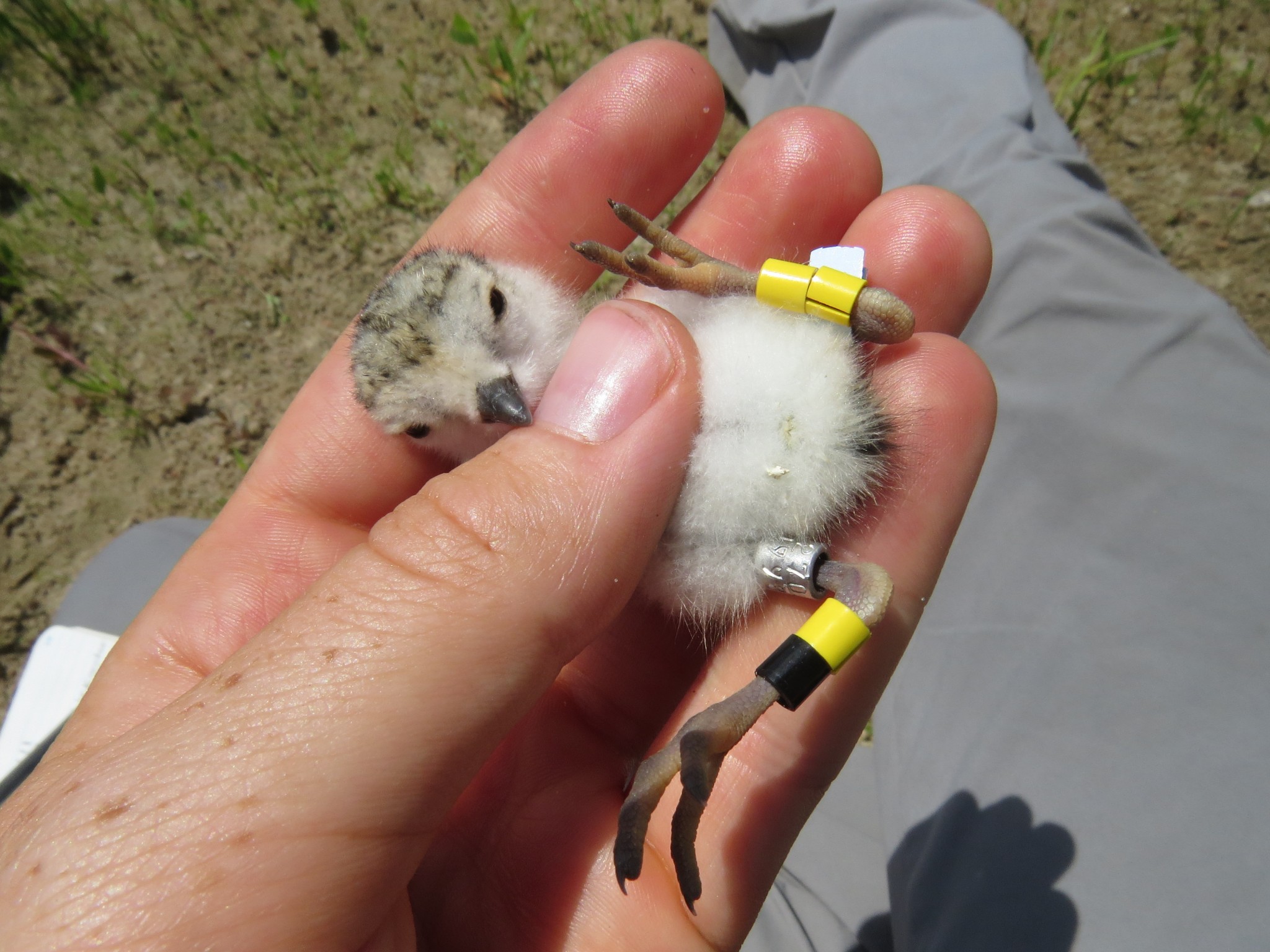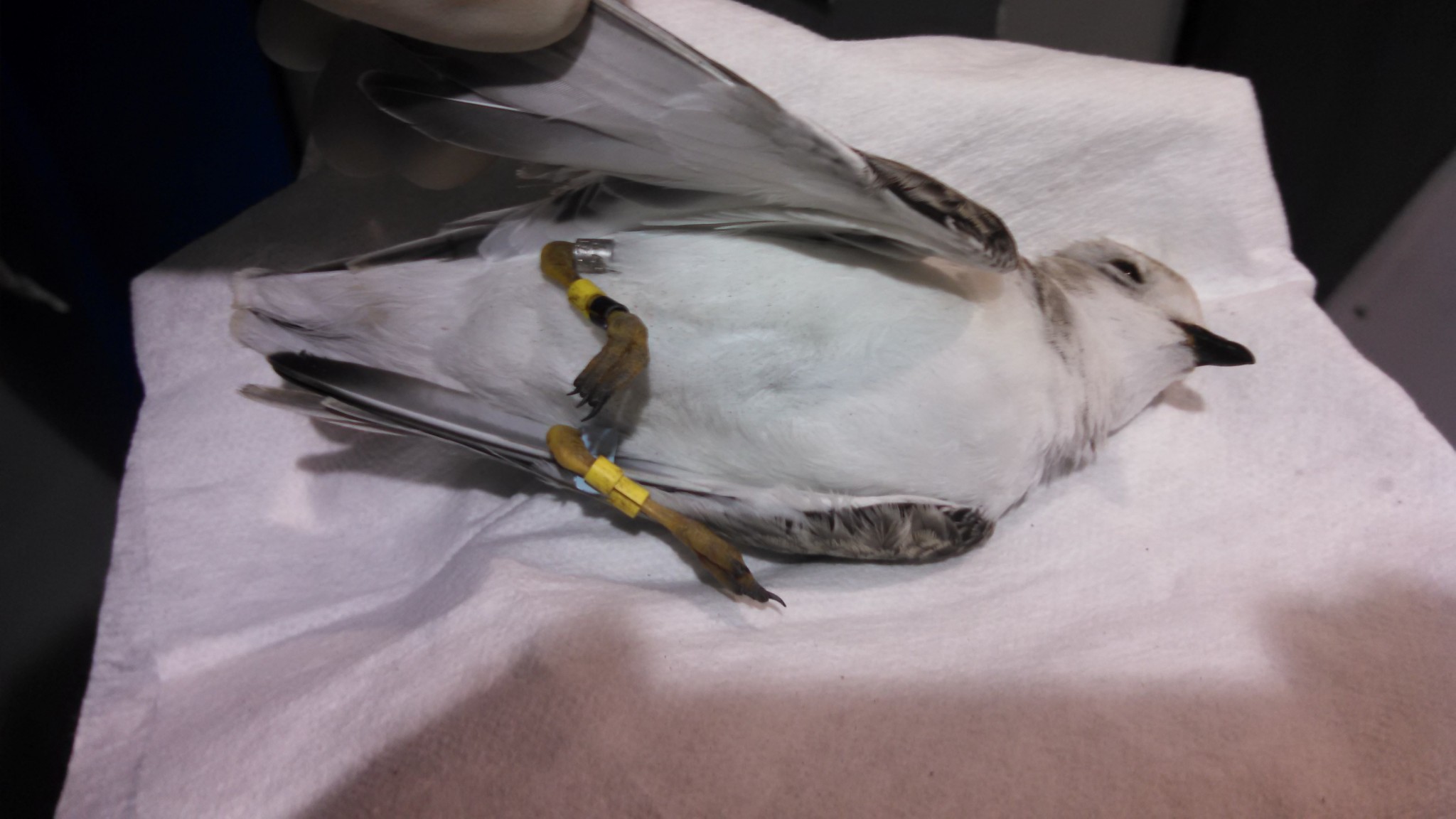 Contributed by Lauren Dinan, Nongame Bird Biologist
Contributed by Lauren Dinan, Nongame Bird Biologist
Last week I posted a story about a Piping Plover that successfully completed its first migration and arrived safely along the U.S. Gulf Coast only two months after hatching in Nebraska. Last week’s story highlighted how remarkable it is that these birds travel over 900 miles or more only a couple short months after hatching. This post is about the perils of migration and, unfortunately, the story does not end happily-ever-after. The reality is that migration is risky, especially for inexperienced young birds, and not every Piping Plover will arrive on a sandy beach on the Gulf Coast.
The other day (August 16th) we received a call from Rick Drapal with Duncan Aviation in Lincoln, Nebraska, about a dead, banded, shorebird found on site. After photos were sent to us we were able to identify the bird as a young Piping Plover possessing familiar bands. In fact, it was a plover I banded as a 3-day old chick on June 28th, 2016, near North Bend, Nebraska. This plover was last observed at the same site where it hatched on July 18th just a a few short days before it fledged (became capable of sustained flight).


This dead plover was found by Troy Richter, another member of the Duncan Aviation staff. The plover was found inside the airline hangar about 50 feet away from the large open garage doors. The plover was not seen flying inside the hangar and was only observed by Troy when it fell to the ground. When he approached the area where it appeared the bird had fallen, it was found dead. The plover likely collided with something (a wall, fan, stationary plane) which caused its death. The day after the dead plover was found I met up with Rick and Troy to recover the carcass.


Piping Plover mortalities are rarely reported and carcasses are not usually recovered, but this case is very unusual given the location. Usually, Piping Plovers are found on sandy beaches near water. The location where this bird was found is surprising since it was in the city of Lincoln, in an airport hangar and nowhere near typical Piping Plover habitat (a beach or shoreline near water). As I stated in my last blog post, “migration is no easy task, especially only a few short weeks after hatching from an egg”. Last week I highlighted the positive – a plover overcoming the challenges of migration and arriving on its wintering grounds. This week, I unfortunately highlight the other side of migration, when a bird doesn’t make it. Understanding and appreciating both sides helps underscore the remarkableness of the story in the previous post about Piping Plover migration.

Thanks to Rick Drapal and Troy Richter with Duncan Aviation for reporting this recovery, providing us valuable data about “our” Piping Plover even if it was not the most happy news, and for taking me around the facility to show me where the bird was recovered.
The post Piping Plovers: The perils of the first migration appeared first on NEBRASKALand Magazine.















